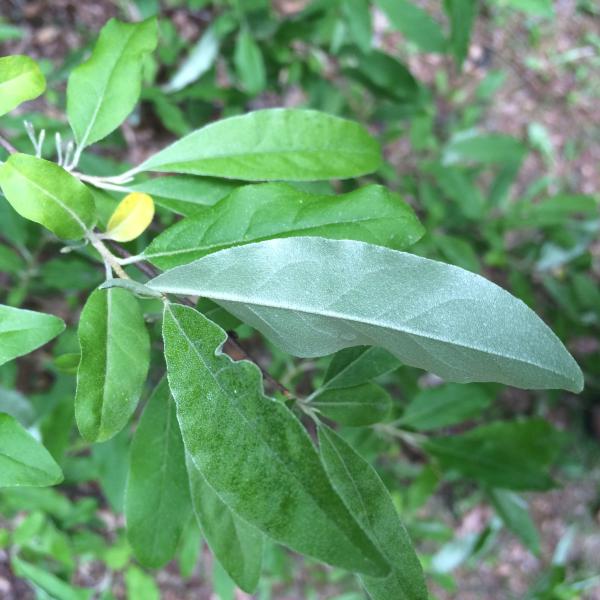
News Source
"STERLING - There is a swath of grass cut on the edge of a field at Michael Pineo's farm about one-and-a-half highway lanes wide, but even that does not protect the field from one of Central Massachusetts' most challenging invaders.
"It still spreads everywhere," he said, pointing to tree-sized bushes of autumn olive - plants once used for roadside stabilization but now are an invasive problem.
Mr. Pineo said his family has owned the farm since the 1950s. He and others have been fighting the invasive plants since the 1980s - four years after Interstate 190 was completed. He has other invasive plants on his property, including oriental bittersweet and common buckthorn, but the worst problem is autumn olive.
The woody shrubs were used to stabilize embankments on the highway and other highways in the state, but the plant spreads aggressively. Mr. Pineo said the plants have spread 20 miles from the highway, filling in open land wherever their seeds have landed. The plants have elegant long leaves that are green and slightly silvery. They also have gold and red berries that look like olives.
Autumn olive is a tree-like shrub that is highly invasive and can grow up to 20-feet-tall. The plants densely pack into areas where they take root creating a thorny bramble. Its many branches create cover, blocking the sun from other plants. Their roots out-compete other plants for water and their seeds are popular snacks for birds who then distribute them far and wide.
"The turkeys eat them and spread them," Mr. Pineo said. "They are like little manure spreaders."
Michael Verseckes, a spokesman for the state Department of Transportation, said that because birds feed on the fruit, the plants are spread for miles and miles along highway corridors.
Autumn olive was brought to this country in the 1830s from China, Japan and Korea. A similar species, Russian olive is native to Asia and southern Europe. It has been found in a few places in the state, but is more of a problem in western states.
The two invasive olives are closely related and were both have been used for erosion control. They have also been used for wildlife habitat improvement and mine reclamation, but have the downside of out-competing native plants and can alter the hydrology of formerly flooded soils, creating fire hazards and making the areas inhospitable to native lowland species.
State Botanist Robert Wernerehl said autumn olive was planted heavily along I-190 during construction. At the time, it proved useful in soil stabilization and revegetation. It is so invasive it is now on the prohibited list and cannot be sold in the state through nurseries. It is found in much of Massachusetts, but also parts or all of the other New England states.
Mr. Verseckes said part of the ability of autumn olive to spread is that it thrives in many different soil conditions. It is a nitrogen-fixing plant allowing it to even survive in low nitrogen conditions. It can be pulled up by the roots when it is small, but all its roots need to be pulled up. If there is a piece of root left, it can regenerate. It also resists mowing and burning. Cutting or burning just makes the problem worse.
"After being cut or burned it re-sprouts vigorously, so that when you had one stem, you will end up with four or five," Mr. Verseckes said.Mr. Pineo, whose family farm lost acreage when I-190 went through, said the plants are a constant challenge.
"It costs quite a lot of money," he said.
The Pineos use the weed killer Roundup on some of the plants and pull others up by hand. Hand pulling the plants proves to be difficult.
"They have thorns," Mr. Pineo said showing a sharp spike growing from a branch.
But Mr. Pineo said the plants eventually reach a height where they cannot be pulled out.
"One of my neighbors cuts it for cordwood," Mr. Pineo said. "It is all over his fields."
Jennifer Forman-Orth, of the state Department of Agricultural Resources, said autumn olive is not something the state is targeting for erradication because it is so well established.
"It is an invasive species, but it was introduced long ago and has become well established in many areas, making it difficult to eradicate," she said. "Given our (the state's) limited resources, we tend to keep our focus on species that are relatively new to the local landscape like mile-a-minute vine and kudzu."
Ms. Forman-Orth said she includes autumn olive when she gives talks and the state offers advice on eradication of the plant when it receives inquiries."
Article by: George Barnes, Telegram & Gazette Staff
Photo by: E. Spinney, "Autumn Olive in Spring"